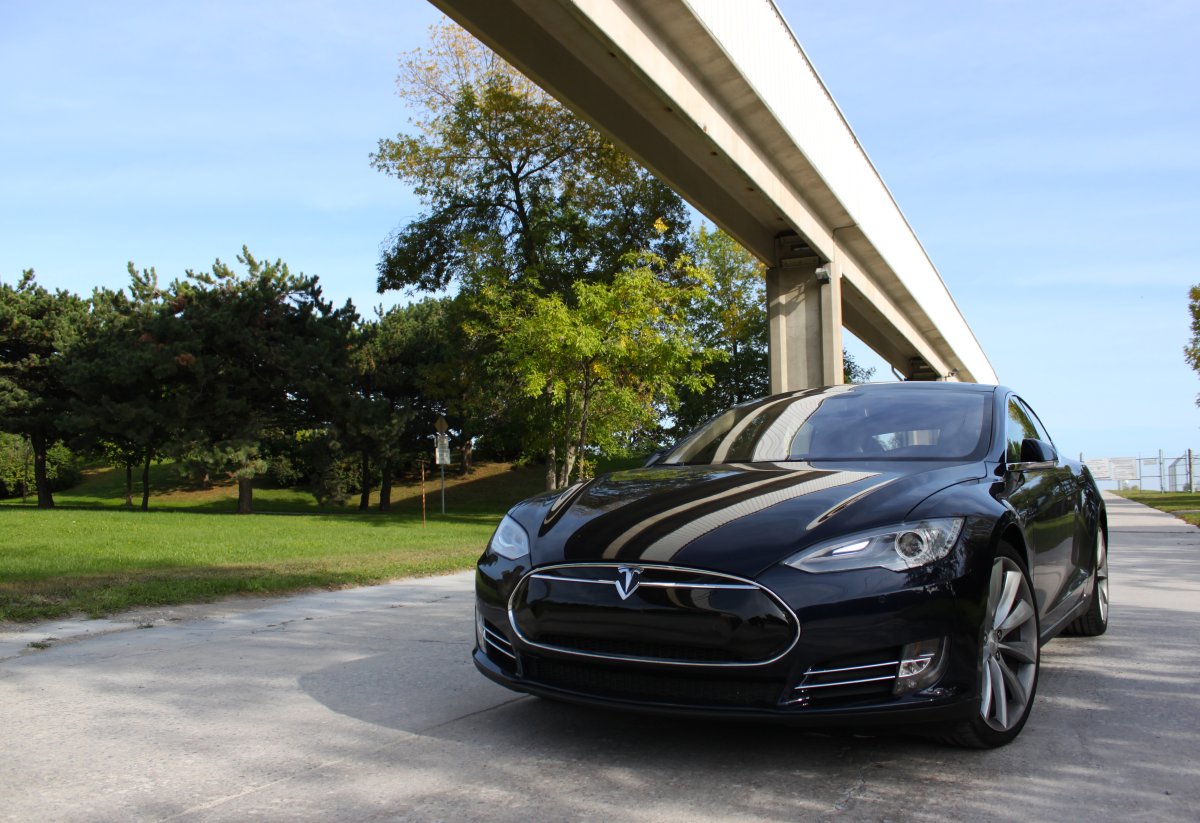TORONTO – Drive from Detroit to Toronto to Montreal and back again without spending a dime on gas.

It’s nothing but a pipe dream – unless you can afford a Tesla Model S. The rest of us will have to get by on the cruder internal combustion cycle. It’s a hard reality to return to after spending a week living with the all-electric luxury car.
Though seemingly futuristic, electric cars are over a century old, with the first electric cars appearing in the late 1800s.
In modern times, the commercial success of cars like the Toyota Prius hybrid has helped renew interest in electric cars and other alternate power sources – something manufacturers were quick to jump on. Though often, their results were more of an afterthought than a viable gasoline replacement, with most manufacturers taking the body and chassis of existing vehicles and converting them to run on electricity – rather than building something new from the ground up.
Under ideal conditions, most electric vehicles will get around 120 kilometres of range but daily driving conditions are often anything but ideal. In an electric car, this can cause range anxiety – the fear that the battery will go dead before you arrive at your destination.
Global News’ consumer reporter Sean O’Shea experienced running out of battery first hand after a trip home in a Ford Focus Electric in 2012.
Range anxiety is still an effective deterrent for anyone looking to skip the gas pumps, but Tesla says with planning between charging stops, its car can take on even the longest road trips.
Tesla claims at least 370 kilometres of range with their offering. On paper, it’s the best case for a gas alternative on the market, but with a starting price of $82,220 in Canada, it’s not a realistic purchase – even with a government rebate of $8,500. Tack on another $1,000 if you install an in-home charging station.
For those who can afford a Model S, the fear or running out of charge during the daily commute simply does not exist – assuming you don’t forget to plug it in at home when it’s not in use.
- Buzz kill? Gen Z less interested in coffee than older Canadians, survey shows
- Body Shop Canada considers sale as demand outpaces inventory
- Indigo nears privatization but experts warn turnaround won’t be ‘quick fix’
- Naloxone-resistant street drug linked to 9 deaths in Eastern Canada seized in Alberta
In the span of a week, the Model S cost just over CAD$8.00 to charge. For comparison, a Honda Civic would cost approximately CAD$66.00 to fill up. During a week of temporary ownership, the car made regular trips between Toronto, Mississauga, Brampton and Oakville, going as far as Niagara Falls and returning to Mississauga with over 200 kilometres of charge remaining. Range anxiety was all but gone after the first day of driving.
The car has features unique to electric vehicles, including a regenerative braking system that replenishes charge during braking. Hard acceleration yields a spaceship-like hum from the electric motors and an almost instant serving of power. Timid drivers will be caught off guard. Unprepared passengers may lose their lunches. Without any engine under the hood, the car is whisper quiet.
The interior is dominated by a massive touchscreen in the centre console. Nearly every setting, including climate control, ride height, headlights and the sunroof can be adjusted via this interface. Also present is a free 3G connection and web browser. The interface can also display an energy usage chart, showing drivers exactly how their driving style impacts the battery.
When it comes time to charge, electric cars prefer power from a 240v outlet and drivers can expect a full charge in approximately seven hours. For homeowners, installing such an outlet isn’t an issue, aside from the labour costs. But if you live in an apartment or condo, this can be more problematic, as you’ll have to clear the installation with the property owner and any association rules in effect.
Another option is one of Tesla’s “Supercharger” stations, which gives a full charge in 40 minutes. You can find two in Toronto – one near Lawrence Avenue and the Don Valley Parkway and another in Cornwall near Highway 401.
Tesla spokesperson Alexis Georgeson told Global News there are plans to add more Supercharger stations throughout the country.
“We will continue to add density in Ontario along the 401 with the opening of a Supercharger in Kingston shortly and another south of Toronto,” Georgeson said.
As far as costs go, the company says CEO Elon Musk will pick up the tab.
“Tesla pays for the station and for the electricity,” Georgeson said.
If these plans do come to fruition, the limited infrastructure in place for electric vehicles would start to look a little more viable. Presently, these stations work only with the Model S. However, the company has opened access to its patents, giving other manufacturers the potential to allow their vehicles to use the stations.
Sales of Tesla’s electric car have been slow in Canada, with sales peaking at over 600 in 2013, according to one tracker. Given its high retail price point, a weak electric car infrastructure and a skeptical market, it’s hardly a surprise. But if Tesla’s plans become reality, things could change in their favour.
While the Model S is out of the reach of the average Canadian, the hope of electric driving doesn’t have to be. Tesla has confirmed a cheaper variant, the Model III, starting at US$35,000






Comments